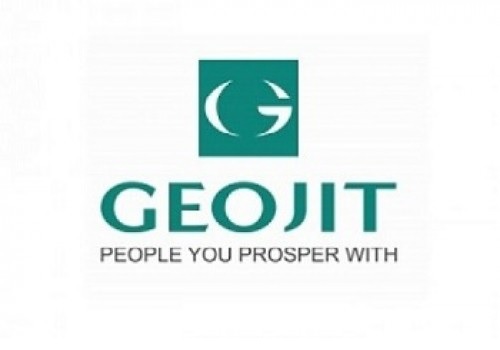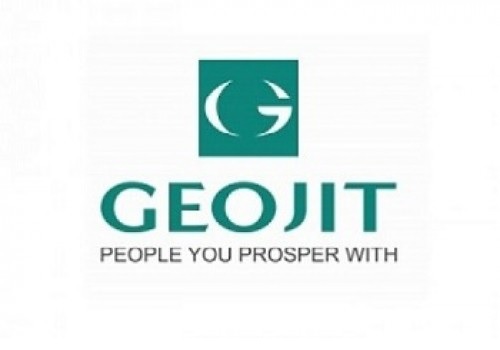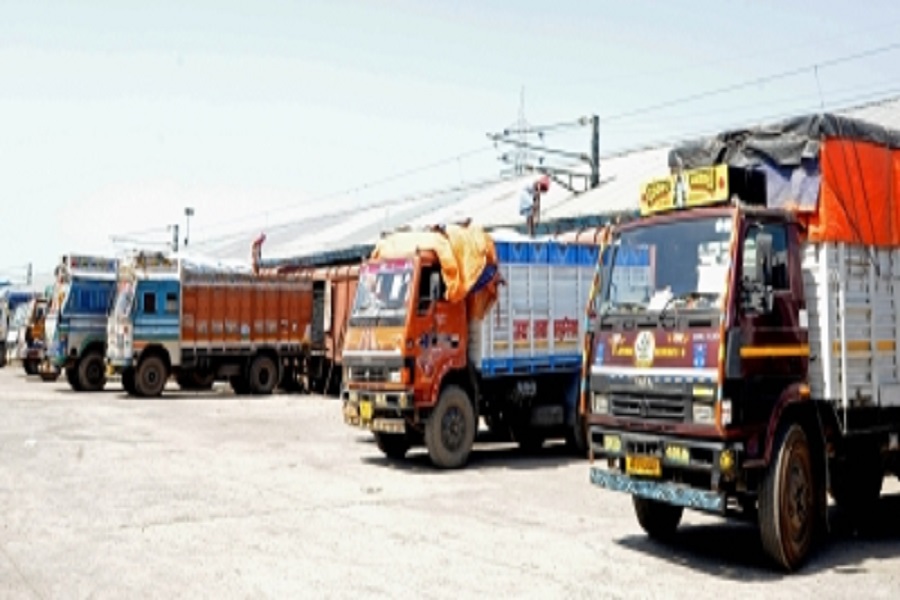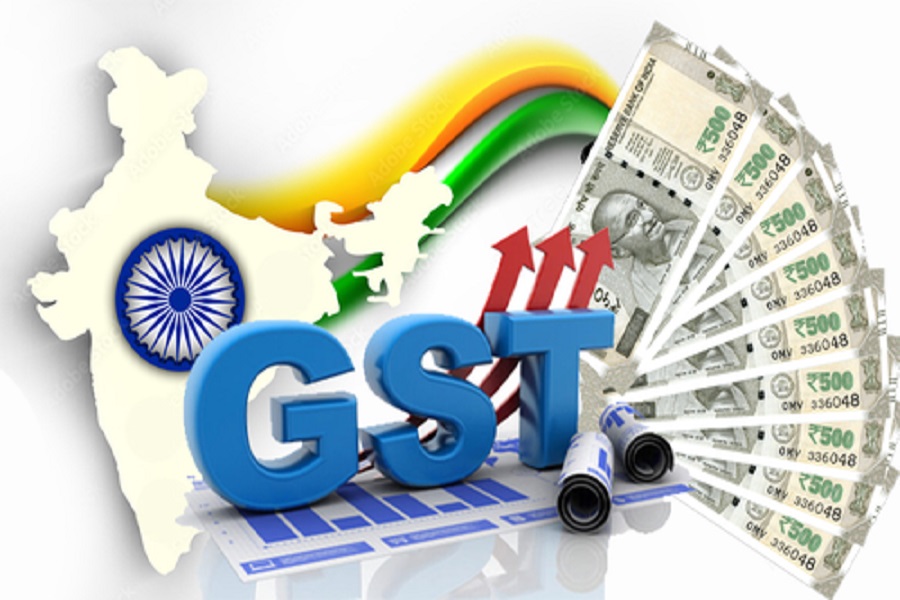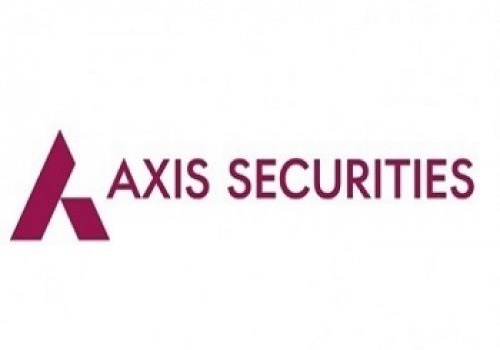Silver trading range for the day is 96240-99820 - Kedia Advisory

Gold
Gold prices declined by 0.45% to settle at Rs.95,592 amid easing global trade tensions, which weighed on the appeal of safe-haven assets. Market sentiment softened after U.S. Treasury Secretary Scott Bessent reported "very good" tariff proposals from major trading partners and noted China’s recent exemption of certain U.S. goods from retaliatory tariffs. These developments signaled a potential de-escalation in trade tensions, dampening gold's risk-hedge demand. Additionally, investor focus has shifted to key upcoming U.S. economic indicators, including Q1 GDP, PCE inflation, and nonfarm payrolls, which could influence the Federal Reserve's interest rate outlook and impact gold prices further. Domestically, gold demand has been subdued, with Indian dealers offering a discount of up to $80 per ounce— the highest since July 2016— as record-high prices have deterred retail buying ahead of the Akshaya Tritiya festival. Jewellery demand has softened significantly, with jewellers receiving fewer advance orders. According to the World Gold Council, India's total gold demand for 2025 is projected to moderate to between 700 and 800 metric tons, compared to 802.8 tons in 2024. While jewellery makes up nearly 70% of India’s gold consumption, investment demand remains strong, particularly through gold ETFs, digital gold, and physical bars and coins. Technically, gold is under long liquidation with a 3.84% drop in open interest to 17,162. Support lies at Rs.95,150, with further downside potential to Rs.94,705. Resistance is seen at Rs.95,920, with a break above likely testing Rs.96,245.
Trading Ideas:
* Gold trading range for the day is 94705-96245.
* Gold dropped as easing trade-war concerns curbed demand for safe-haven assets.
* Treasury Secretary Scott Bessent said that many top U.S. trading partners have made "very good" tariff proposals.
* China's recent move to exempt certain U.S. goods from its retaliatory tariffs signaled a willingness to de-escalate tensions.
Silver
Silver prices edged higher by 0.42% to settle at Rs.98,118, supported by strength in base metal prices and ongoing investor anticipation around U.S.-China trade developments and upcoming U.S. economic data. Despite China refuting claims of trade talks with the U.S., markets found some relief in comments by Treasury Secretary Scott Bessent, who cited “very good” tariff proposals from key trade partners and suggested a deal with India could emerge soon. A key economic backdrop contributing to silver's support includes weaker-than-expected U.S. job openings, which fell to 7.192 million in March — the lowest in six months — and a record-high U.S. trade deficit in goods at $162 billion. These economic signals, coupled with looming inflation data and job reports, could influence the Federal Reserve's policy direction, affecting precious metals. From a supply-demand perspective, silver continues to benefit from a bullish fundamental backdrop. A global deficit of 117.6 million troy ounces is forecast for 2025 — the fifth consecutive year of shortfall. Industrial fabrication is expected to hit a record high, surpassing 700 million ounces, driven by green energy and electronics demand. Technically, the silver market is under fresh buying momentum, with open interest rising by 15.31% to 13,511 contracts, indicating renewed investor participation. Immediate support is at Rs.97,175, with further downside risk to Rs.96,240. On the upside, resistance is pegged at Rs.98,965, and a breakout could take prices toward Rs.99,820.
Trading Ideas:
* Silver trading range for the day is 96240-99820.
* Silver gains getting support from base metals prices as investors awaited clarity on US-China trade relations.
* China reiterated that it is not engaged in trade talks with the US, countering claims made by President Donald Trump.
* Job openings in the United States fell by 288,000 to 7.192 million in March 2025, the lowest in six months
Crude oil
Crude oil prices declined by 1.99% to settle at Rs.5,176 amid growing pessimism surrounding global demand due to escalating trade tensions between the United States and China. The ongoing trade war, fueled by President Trump's aggressive tariff strategy, has raised fears of a potential global recession, weighing heavily on oil demand expectations. Barclays revised its 2025 Brent crude forecast downward by $4 to $70 per barrel, citing an anticipated 1 million barrels per day (bpd) supply surplus driven by softer demand and a potential shift in OPEC+ production strategy. Notably, OPEC+ members are expected to propose accelerated output increases again in June, further amplifying concerns of oversupply. From a supply standpoint, Kazakhstan boosted oil exports by 7% year-on-year in Q1 2025, while U.S. crude inventories rose for a fourth consecutive week, up by 244,000 barrels — defying market expectations of a draw. Gasoline and distillate stocks, however, saw significant declines of 4.5 million and 2.3 million barrels respectively, offering some support. Nevertheless, the International Energy Agency (IEA) forecasts a global oil surplus of 600,000 bpd in 2025, which could grow further if OPEC+ continues easing output cuts and fails to enforce production discipline. Technically, the market is under fresh selling pressure, with open interest rising by 13.52% to 16,139 contracts. Crude oil finds immediate support at Rs.5,129, with further downside potential to Rs.5,082. Resistance is seen at Rs.5,251, and a break above could push prices toward Rs.5,326.
Trading Ideas:
* Crudeoil trading range for the day is 5082-5326.
* Crude oil fell as investors lowered their demand growth expectations due to the trade war.
* Barclays cut its 2025 Brent crude price forecast by $4 to $70 a barrel, citing elevated trade tensions.
* Several members of OPEC+, will suggest an acceleration of output hikes for a second consecutive month in June
Natural gas
Natural gas prices edged up by 0.35% to settle at Rs.287, supported by higher demand forecasts and short-covering activity. However, gains remained limited due to rising production levels and expectations of mild weather through mid-May, which is likely to curb both heating and cooling demand. This has allowed utilities to inject more gas into storage, easing short-term supply concerns. Despite colder-than-usual weather earlier in the year reducing stockpiles, inventories now stand at 1.934 trillion cubic feet following a robust injection of 88 billion cubic feet last week — the largest build in nearly a year and well above market expectations of 65 bcf. Production continues to rise, with April's average gas output in the Lower 48 U.S. states climbing to 106.5 bcfd, up from March’s record 106.2 bcfd. Simultaneously, average gas demand, including exports, is expected to decline from 99.2 bcfd this week to 97.4 bcfd next week, as per LSEG. Despite this short-term dip, long-term projections remain optimistic. The U.S. Energy Information Administration (EIA) forecasts record-high dry gas production at 104.6 bcfd in 2025 and 107.3 bcfd in 2026, with domestic consumption also projected to rise to 90.7 bcfd in 2025. LNG exports are expected to hit 14.0 bcfd in 2025 and 16.2 bcfd in 2026, up from 12.0 bcfd in 2024. Technically, the market is witnessing short covering, with open interest falling 7.96% to 11,031 contracts while prices rose slightly. Natural gas has support at Rs.281.7, with further downside at Rs.276.3. Resistance is seen at Rs.293.7, and a break above this level could push prices towards Rs.300.3.
Trading Ideas:
* Naturalgas trading range for the day is 276.3-300.3.
* Natural gas gains on lifted demand forecasts, and some traders cited short-covering.
* U.S. LNG export feedgas on track to hit record high in April
* U.S. gas output on track to hit record high in April
Copper
Copper prices closed marginally higher by 0.01% at Rs.854.4, supported by robust Chinese demand ahead of the May holiday, tight near-term regional supply, and a stronger yuan. The Yangshan copper premium rose to $93 per ton, its highest since December 2023, marking a 6% gain since last Friday. This spike reflects a 32% weekly drop in copper inventories at Shanghai Futures Exchange-monitored warehouses, pointing to tightening supply conditions. Additionally, concerns over potential U.S. copper import tariffs continue to drive refined copper shipments towards the U.S., inflating the Comex premium to $1,443 per ton above LME benchmarks — an unusually high spread. Meanwhile, copper inventories in COMEX warehouses surged 40% this month, partially offsetting the drawdowns in Asia. The LME cash-to-three-month spread widened to a $30 premium from a $16.5 discount a week earlier, signaling tighter nearby supply within the LME system. Despite these short-term constraints, the International Copper Study Group (ICSG) forecasts a widening global copper surplus in 2025 to 289,000 tons, up from 138,000 tons last year. The refined copper market showed a 61,000-ton surplus in February, narrowing from January’s 90,000-ton surplus, though still reflecting oversupply. China’s imports of refined copper in March fell 1.4% year-on-year to 467,000 tons, with Q1 imports down 5.2%, driven by higher U.S. prices redirecting supply. Technically, copper is under fresh buying, with open interest ticking up 0.09% to 7,450. Support is seen at Rs.850, with further downside at Rs.845.6. Resistance lies at Rs.859.4, and a break above may lead prices toward Rs.864.4.
Trading Ideas:
* Copper trading range for the day is 845.6-864.4.
* Copper rose amid high demand from China and concerns about tight nearby regional supply, and a stronger yuan currency.
* The Yangshan copper premium, was last at $93 per ton, its highest price since December 2023.
* Data showed a 32% weekly drop in copper inventories in warehouses monitored by the Shanghai Futures Exchange.
Zinc
Zinc prices edged up by 0.1% to Rs.251.1, supported by short covering and investor attention on U.S.-China trade developments and mixed U.S. economic signals. While President Donald Trump claimed progress in trade talks with China, Chinese officials denied ongoing negotiations, and U.S. Treasury Secretary Scott Bessent provided no clear confirmation, creating uncertainty in the macroeconomic outlook. In the physical market, Shanghai Futures Exchange-monitored zinc inventories fell sharply by 12.3% from the previous Friday, indicating tighter domestic supply. On the supply side, production constraints continue to lend support to prices. Nyrstar announced a 25% production cut at its Hobart smelter in Australia, which has an annual capacity of 260,000 metric tons. Further tightening is expected from the Red Dog Mine in Alaska, a major global zinc producer, which will slow operations in 2025 due to ore depletion. However, the International Lead and Zinc Study Group (ILZSG) projects a surplus in the refined zinc market for 2025, with global output forecast to rise by 1.8% to 13.73 million tons, outpacing the 1% demand growth to 13.64 million tons. China’s refined zinc production in March 2025 jumped nearly 14% month-on-month and over 4% year-on-year, driven by higher treatment charges (TCs), elevated sulphuric acid prices, and resumed operations post-Chinese New Year. Technically, the market is under short covering as open interest dropped 1.4% to 2,742. Zinc has support at Rs.249.5 and Rs.248, while resistance is seen at Rs.252.7 and higher at Rs.254.4.
Trading Ideas:
* Zinc trading range for the day is 248-254.4.
* Zinc gains as investors tracked developments in the U.S.-China negotiations and a bunch of U.S. economic data.
* U.S. President Donald Trump said progress has been made in talks with China.
* In refined zinc, global demand is forecast to rise by 1% to 13.64 million tons this year.
Aluminium
Aluminium prices rose by 0.81% to Rs.236.45, supported by a weakening U.S. dollar and continued geopolitical uncertainties, particularly regarding U.S.-China trade relations. Although President Trump claimed progress in tariff negotiations, Beijing denied ongoing talks and maintained its firm stance, adding to market caution. Despite this, China's confidence in achieving its 5% growth target without resorting to fresh stimulus measures added some stability to the sentiment. On the supply front, global primary aluminium output climbed by 2.3% year-on-year in March to 6.227 million tonnes, according to the International Aluminium Institute (IAI). China, the world's largest aluminium producer, increased its output by 2.6% year-on-year in Q1 2025, nearing the government's 45-million-ton annual cap set in 2017. In March alone, Chinese aluminium production rose 4.4% to 3.75 million metric tons. Cumulatively, January–March production reached 11.07 million metric tons, up 3.2% year-on-year. Meanwhile, aluminium stocks in Shanghai Futures Exchange-monitored warehouses dropped by 6.2% weekly, and inventories at Japan’s three major ports declined 1.2% month-on-month to 309,700 tons, indicating a tightening in regional supply. On the trade side, China’s exports of unwrought aluminium and related products surged by 17% in the first ten months of the year, reaching 5.5 million tons. Technically, the market saw fresh buying with open interest up 0.46% to 5,036. Support is seen at Rs.234.4, followed by Rs.232.3. Resistance is expected at Rs.237.7, with a breakout potentially testing Rs.238.9.
Trading Ideas:
* Aluminium trading range for the day is 232.3-238.9.
* Aluminium gains supported by a weakening greenback amid growing concerns over US-China trade developments.
* Beijing expressed confidence in meeting its full-year growth target of around 5% but refrained from announcing new stimulus.
* Traders are also watching China’s April manufacturing data for signs of any impact from US tariffs on Chinese goods.
Cottoncandy
Cottoncandy prices fell by 1.14% to Rs.54,670 amid profit booking, following a recent bullish streak driven by concerns over a shrinking domestic crop. The Cotton Association of India (CAI) revised its production forecast downward by 4 lakh bales to 291.30 lakh bales (170 kg each), largely due to reduced output in Maharashtra. Previously, CAI estimated production at 295.30 lakh bales. Despite the lower crop outlook, prices saw limited upside due to weak mill demand and ample current stocks. As of March-end, total cotton supply, including imports and opening stocks, stood at 306.83 lakh bales. Imports for the current season are expected to surge to 33 lakh bales, more than doubling from 15.20 lakh bales last year, reflecting heightened concerns over crop shrinkage. Meanwhile, exports are projected to decline sharply to 16 lakh bales, down from 28.36 lakh bales a year earlier. The estimated closing stock for 2024–25 has been lowered to 23.49 lakh bales from 30.19 lakh bales last year, indicating tightening domestic availability by season end. On the global front, the U.S. balance sheet shows a marginal reduction in exports and a corresponding increase in ending stocks. Global production and consumption forecasts have also been reduced, particularly due to lower demand from China and Indonesia, with minor gains in Turkey. Technically, the market is undergoing long liquidation, with open interest falling by 1.18% to 251. Support lies at Rs.53,940, with further downside potential to Rs.53,220, while resistance is seen at Rs.55,440, and a break above could take prices to Rs.56,220.
Trading Ideas:
* Cottoncandy trading range for the day is 53220-56220.
* Cotton dropped on profit booking after prices gained as CAI expects a shrinkage in the domestic crop
* CAI has estimated the total cotton supply till the end of March including the imports at 306.83 lakh bales.
* Cotton exports for the 2024-25 season are pegged at 16 lakh bales, lower by 12.36 lakh bales
* In Rajkot, a major spot market, the price ended at 25982.1 Rupees dropped by -0.06 percent.
Turmeric
Turmeric prices continued their downward trend, settling 1.66% lower at Rs.13,772 amid weak domestic demand and subdued export enquiries, despite adequate market supplies. Daily arrivals across key markets stood at 51,732 bags, down from 74,059 in the previous session, reflecting reduced selling pressure. Notably, in Sangli—one of the primary producing regions—seasonal arrivals have declined to 7.0 lakh bags compared to 7.2 lakh bags last year, reinforcing concerns about lower-than-expected production. Although the area under turmeric cultivation has increased by 10% to 3.30 lakh hectares this season, productivity is likely to be negatively impacted due to untimely rains. Last year’s output stood at 10.75 lakh tonnes, but current season yields are expected to be 10–15% lower, especially in regions like Nanded where crop quality has been affected by small rhizomes and rots. On the trade front, turmeric exports rose by 12.93% during April–January 2025 to 1.48 lakh tonnes compared to the same period last year. However, monthly exports in January dropped 23.17% compared to December, though they remained 12.18% higher year-on-year. Technically, the market is undergoing long liquidation, with open interest falling by 7.35% to 13,230, suggesting weakening bullish positions. Turmeric has immediate support at Rs.13,610, and a break below could lead to a test of Rs.13,448. On the upside, resistance is seen at Rs.14,024, with further gains likely if prices breach Rs.14,276.
Trading Ideas:
* Turmeric trading range for the day is 13448-14276.
* Turmeric dropped due to weak domestic demand and weak export enquiries.
* Arrivals in key markets dropped to 51,732 bags from 74,059 the previous session
* Lingering worries over slow rhizome growth and low yields limited further downside in prices.
* In Nizamabad, a major spot market, the price ended at 14510.4 Rupees dropped by -0.77 percent.
Jeera
Jeera prices extended losses, settling down by 1.75% at Rs.21,925, weighed by steady supplies and weak export momentum. The rise in arrivals, especially in Gujarat where volumes jumped to 27,300 bags from 24,000 in the previous session, contributed to downward pressure on prices. While arrivals from Rajasthan remain limited, the overall supply remains comfortable due to available stocks. Farmers are reportedly holding about 20 lakh bags of cumin, with only 3–4 lakh bags expected to be traded by season’s end, potentially leaving a large carry-forward stock of 16 lakh bags. This buffer has capped significant upside moves despite near-term tight arrivals due to a delayed crop start caused by adverse weather during sowing in both Gujarat and Rajasthan. On the export front, Jeera exports rose sharply by 66.98% between April 2024 and January 2025, reaching 182,167.70 tonnes compared to 109,097.06 tonnes a year earlier. However, a month-on-month decline of 5.50% was noted in January 2025 exports, reflecting weaker immediate overseas demand. Imports of jeera plummeted 93.84% year-on-year during the same period, suggesting ample domestic availability and reduced reliance on external supply. Technically, the market is undergoing long liquidation with open interest falling by 2.32% to 4,797, indicating weak bullish sentiment. Jeera is finding support at Rs.21,710, and a drop below this could lead to further downside towards Rs.21,500. On the upside, resistance is seen at Rs.22,260, and a move above could trigger a test of Rs.22,600.
Trading Ideas:
* Jeera trading range for the day is 21500-22600.
* Jeera dropped due to comfortable supplies and tepid export interest.
* Gujarat saw 27,300 bags arrive, up from 24,000 bags, exerting further downward pressure.
* Supply trends remain crucial, as near-term supplies remain tight due to limited arrivals from Rajasthan.
* In Unjha, a major spot market, the price ended at 22817.25 Rupees dropped by -0.4 percent.
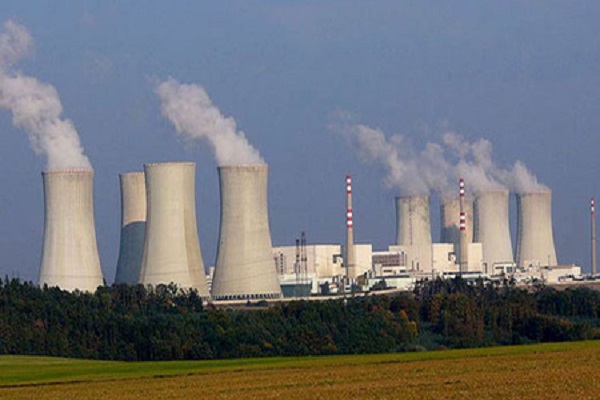





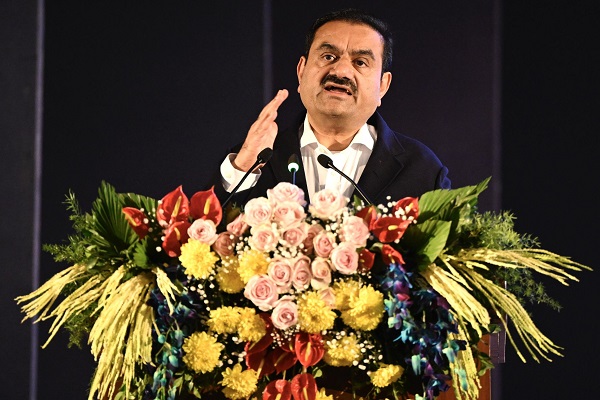



More News
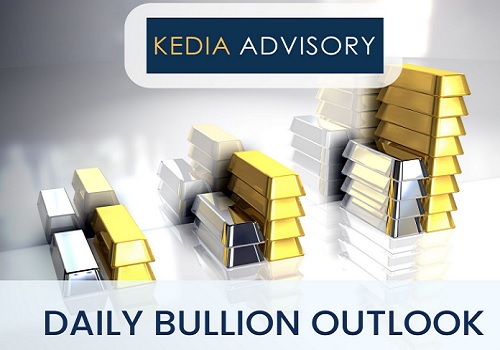
Buy Gold Jun @ 86800 SL 86500 TGT 87200-87500. MCX - Kedia Advisory
